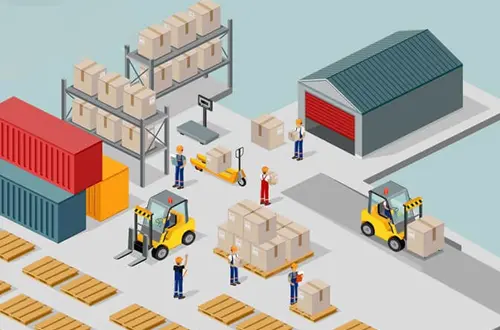Amazon’s Small Batch Inventory Fees Are Refundable, Only in April
Table of Contents
Amazon recently updated its fulfillment fee policy, introducing a new low-volume inventory fee designed to encourage sellers to manage inventory levels more efficiently. The implementation of this new policy is particularly important for sellers using Fulfillment by Amazon (FBA) services, as it will directly affect their operating costs and inventory management strategies.
What are low-volume inventory charges?
Amazon will charge a low-volume inventory fee for standard-size items whose inventory levels are chronically below customer demand. The purpose of this fee is to incentivize sellers to maintain appropriate inventory levels to ensure that products can meet market demand in a timely manner, thereby improving delivery efficiency and customer satisfaction.
April transition period
In order to help sellers adapt to this new policy, Amazon has set up a one-month transition period from April 1 to April 30. During this period, sellers still need to pay low-volume inventory fees in accordance with regulations, but Amazon will fully refund these fees to sellers in May. This move is intended to provide sellers with a buffer period to test and adjust your inventory strategy without any risk and avoid incurring additional costs in the future.

You can observe and analyze whether current inventory measures are effective or if adjustments need to be made to avoid unnecessary expenses in the future. Remember, starting on May 1st, low-volume inventory fees will be officially charged and will not be refunded.
Official fees will start in May
Starting on May 1, Amazon will officially charge low-volume inventory fees and will no longer provide refunds. This means that sellers need to start managing inventory immediately after the end of the April transition period to ensure that inventory levels match sales demand to avoid paying additional low-volume inventory fees.
How to avoid low-volume inventory fees?
To avoid incurring low-volume inventory fees, sellers need to ensure that your long-term supply history (last 90 days) or short-term supply history (last 30 days) exceeds 28 days.
Sellers can manage inventory to avoid fees by:
It is necessary to predict sales trends more accurately and replenish goods in a timely manner to ensure that inventory levels can meet sales needs for at least four weeks.
By optimizing inventory and analyzing sales data, adjust inventory strategies to reduce the inventory of slow-moving goods.
Monitor and forecast inventory needs with revenue calculators and other tools provided by Amazon.
If your warehousing plan includes standard-size items, non-standard-size items, or special handling categories, you may face reduced warehousing options. To avoid this situation, it is recommended to create separate storage plans for different types of goods, such as clothing, shoes, jewelry, etc.
To maximize the number of warehousing options available to you, you need to ensure your shipments meet Amazon’s requirements. This includes ensuring each box contains the same SKU combination and quantity, as well as taking into account the quantity of items and the number of boxes. Through these strategies, you can maximize your inbound configuration options.
Methods to reduce warehousing configuration service fees
You can pay lower or no fees by using the partial shipment split option or the Amazon-optimized shipment split option.
The Amazon Warehousing Distribution Network (AWD) service can help you optimize your inventory allocation at no additional cost.
Faced with the introduction of Amazon's new low-volume inventory fee policy and warehousing configuration service fee, if you are still having a headache on how to optimize inventory management, you can also choose to use a professional third-party transportation service provider to solve this problem for you. Professional third-party transportation service providers have the expertise and experience to help you deal with complex logistics and inventory management challenges.
Several advantages of choosing a third-party shipping service provider
Professional transportation service providers usually have in-depth industry knowledge and the latest market information, and can provide you with advice that is consistent with current policies and trends.
chinadivision can provide customized logistics and inventory management solutions based on your specific business needs and inventory status. By optimizing transportation routes and cargo consolidation, chinadivision can help you reduce transportation costs and improve overall operational efficiency.
Many third-party service providers offer advanced technology platforms, such as inventory management systems and data analysis tools, to help you better predict demand, track inventory, and make data-driven decisions.
Professional service providers can help you avoid potential supply chain risks, such as transportation delays, cargo damage, etc., and ensure business continuity.
Outsourcing logistics and inventory management to a third party allows your team to focus on core operations, such as product development and marketing. High-quality third-party service providers provide professional customer support to ensure that you can get timely help when you encounter problems.





